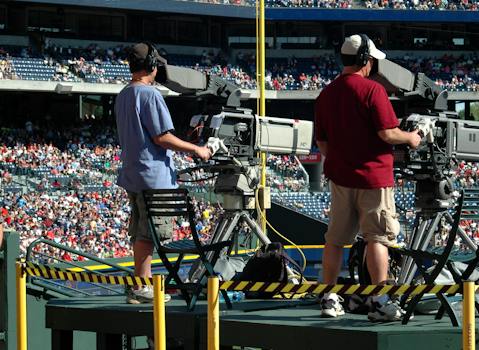

-
Table of Contents
Unveiling the passion and rivalry that transcends the game.
Introduction
Football is not just a game; it is a passion that ignites intense rivalries between teams and their fans. Beyond the field, these rivalries transcend mere competition, often rooted in historical, cultural, and even political contexts. Exploring football's most intense rivalries allows us to delve into the deep-seated emotions, fierce loyalties, and heated encounters that make this sport so captivating. From the iconic clashes between Barcelona and Real Madrid to the historic battles of Manchester United and Liverpool, this exploration takes us beyond the boundaries of the pitch and into the heart of football's most intense rivalries.
The Historical Significance of Football Rivalries: Uncovering the Origins and Impact
Football rivalries have long been a captivating aspect of the sport, captivating fans and players alike. These intense rivalries go beyond the field, with deep historical significance and a lasting impact on the sport and its communities. Understanding the origins and impact of these rivalries provides valuable insight into the rich tapestry of football history.
One of the most iconic football rivalries is that between Manchester United and Liverpool. Dating back to the late 19th century, this rivalry emerged from the industrial rivalry between the cities of Manchester and Liverpool. As the two cities grew in prominence during the Industrial Revolution, so did the rivalry between their football clubs. This rivalry has transcended generations, with each match carrying the weight of history and pride for both sets of fans.
Similarly, the rivalry between Barcelona and Real Madrid is deeply rooted in the historical and cultural differences between Catalonia and the Spanish capital. This rivalry has its origins in the early 20th century when political tensions between Catalonia and the central government were at their peak. The football clubs became symbols of these regional identities, and their matches became battlegrounds for political and cultural expression. Even today, the rivalry between Barcelona and Real Madrid is a reflection of the ongoing tensions between Catalonia and the Spanish state.
Football rivalries also have a significant impact on the communities surrounding the clubs. These rivalries often divide cities and regions, creating a sense of belonging and identity for fans. The intense passion and loyalty displayed by supporters can lead to a strong sense of community and camaraderie. On match days, entire neighborhoods come alive with chants, flags, and colors, creating an electric atmosphere that is unique to football.
Moreover, football rivalries have economic implications as well. The matches between rival teams attract large crowds, both at the stadium and through television broadcasts. This influx of fans brings revenue to local businesses, such as restaurants, bars, and hotels. The economic impact of these rivalries extends beyond match days, as fans often travel to away games, further boosting local economies. Additionally, the sale of merchandise and memorabilia related to these rivalries generates substantial revenue for the clubs and the sport as a whole.
Furthermore, football rivalries have a lasting impact on the players themselves. The pressure and intensity of these matches can bring out the best in players, pushing them to perform at their highest level. The bragging rights associated with victory in a rivalry match can elevate a player's status and reputation among fans. Conversely, defeat can be devastating, leading to criticism and scrutiny from both fans and the media. The emotional and psychological toll of these rivalries is a testament to their significance in the world of football.
In conclusion, football rivalries have a deep historical significance and a lasting impact on the sport and its communities. Understanding the origins and impact of these rivalries provides valuable insight into the rich tapestry of football history. From the industrial rivalries between Manchester United and Liverpool to the political tensions between Barcelona and Real Madrid, these rivalries reflect the cultural, social, and economic dynamics of their respective regions. Beyond the field, football rivalries create a sense of belonging and identity for fans, while also generating revenue for local businesses and the sport itself. The pressure and intensity of these matches have a profound impact on players, shaping their careers and legacies. Football rivalries are more than just games; they are a reflection of the human experience and the power of sport to unite and divide.
Exploring the Cultural Impact of Football Rivalries: How They Shape Communities and Identity

Football rivalries have long been a source of intense passion and excitement for fans around the world. Beyond the field, these rivalries have a profound cultural impact, shaping communities and individual identities. From the fierce battles between clubs like Barcelona and Real Madrid in Spain, to the historic clashes between Manchester United and Liverpool in England, football rivalries go far beyond the game itself.
One of the most significant ways in which football rivalries shape communities is through the creation of a sense of belonging and identity. Supporting a particular team becomes more than just a hobby; it becomes a part of who you are. In cities like Barcelona and Madrid, being a fan of either Barcelona or Real Madrid is not just about supporting a football club, but about aligning yourself with a particular culture and way of life. The rivalry between these two clubs is deeply ingrained in the fabric of these cities, and being a fan is a way of expressing your identity and belonging to a community.
Football rivalries also have a profound impact on local economies. Matches between rival teams often attract large crowds, both from the local area and from further afield. This influx of visitors brings with it a boost in tourism, as fans travel to the city to support their team. Local businesses, such as hotels, restaurants, and bars, benefit greatly from this increased footfall. The economic impact of football rivalries can be seen not only on match days but also in the sale of merchandise and memorabilia throughout the year. The rivalry between Manchester United and Liverpool, for example, generates millions of pounds in revenue for both clubs and the surrounding businesses.
Furthermore, football rivalries can also have a significant impact on social cohesion within communities. While rivalries can sometimes lead to tensions and even violence, they can also bring people together. Supporting a team creates a sense of camaraderie and unity among fans, fostering a sense of community. In cities like Glasgow, where the rivalry between Celtic and Rangers runs deep, fans from both sides often come together to support local charities and engage in community projects. These rivalries can act as a catalyst for positive social change, bringing people together for a common cause.
In addition to shaping communities, football rivalries also play a role in shaping individual identities. Supporting a team can be a deeply personal experience, with fans often passing down their allegiance from generation to generation. Being a fan of a particular team becomes a part of who you are, influencing your values, beliefs, and even your sense of self. For many fans, their team becomes an integral part of their identity, and the rivalries between teams only serve to strengthen this connection.
In conclusion, football rivalries have a far-reaching cultural impact that extends beyond the field. They shape communities, create a sense of belonging and identity, boost local economies, and even foster social cohesion. Whether it's the passionate clashes between Barcelona and Real Madrid or the historic battles between Manchester United and Liverpool, football rivalries are an integral part of the fabric of society. They bring people together, create a sense of unity, and provide a platform for individuals to express their identity and belonging. Football rivalries are more than just a game; they are a reflection of the communities and cultures in which they exist.
Beyond the Game: Examining the Social and Economic Effects of Football Rivalries
Football rivalries are a fundamental aspect of the sport, captivating fans around the world with their intensity and passion. Beyond the game itself, these rivalries have far-reaching social and economic effects that shape the communities in which they exist. From the streets to the stadiums, the impact of football rivalries extends far beyond the field.
One of the most significant social effects of football rivalries is the sense of identity and belonging they provide to fans. Supporting a team becomes more than just a hobby; it becomes a way of life. Rivalries create a strong bond among fans, uniting them in their shared love for their team and their desire to see their rivals defeated. This sense of belonging fosters a strong community spirit, as fans come together to celebrate victories and console each other in defeat.
However, football rivalries can also lead to negative social consequences. The intense passion and rivalry between fans can sometimes spill over into violence and hooliganism. This dark side of football rivalries has been a persistent issue, with clashes between rival fans resulting in injuries and even deaths. Efforts have been made to combat this violence, with increased security measures and stricter regulations, but the problem persists, tarnishing the reputation of the sport and its fans.
Beyond the social impact, football rivalries also have significant economic effects on the communities involved. The presence of a successful football team can bring substantial economic benefits to a city or region. Increased tourism, ticket sales, and merchandise revenue all contribute to the local economy. Businesses surrounding stadiums thrive on match days, as fans flock to bars, restaurants, and shops, injecting money into the local economy.
Moreover, football rivalries can also have a positive impact on infrastructure development. The need to accommodate large crowds of passionate fans often leads to the construction or renovation of stadiums and surrounding facilities. This investment in infrastructure not only enhances the matchday experience but also leaves a lasting legacy for the community long after the final whistle has blown.
However, the economic effects of football rivalries are not always positive. The financial burden of maintaining a successful team and competing with rivals can be immense. Clubs often spend vast sums of money on player transfers and wages to remain competitive, leading to financial instability and even bankruptcy in some cases. This financial pressure can have a ripple effect on the local economy, affecting businesses that rely on the success of the team.
In conclusion, football rivalries extend far beyond the game itself, shaping the social and economic fabric of the communities in which they exist. While they provide a sense of identity and belonging to fans, they can also lead to violence and hooliganism. Economically, rivalries can bring prosperity through increased tourism and infrastructure development, but they can also place a heavy financial burden on clubs and the local economy. As football continues to captivate the world, it is essential to recognize and understand the broader impact of these intense rivalries.
Q&A
1. What is the book "Exploring Football's Most Intense Rivalries: Beyond the Field" about?
The book explores the intense rivalries in football beyond the playing field.
2. Who is the author of "Exploring Football's Most Intense Rivalries: Beyond the Field"?
The author of the book is Michael Cox.
3. What can readers expect to find in "Exploring Football's Most Intense Rivalries: Beyond the Field"?
Readers can expect to find in-depth analysis and insights into the history, culture, and impact of football's most intense rivalries.
Conclusion
In conclusion, exploring football's most intense rivalries goes beyond the field. These rivalries are deeply rooted in history, culture, and passion, creating a unique atmosphere both on and off the pitch. The fierce competition between teams and their dedicated fan bases adds an extra layer of excitement and intensity to the sport. These rivalries have the power to unite communities and ignite emotions, making football more than just a game.










